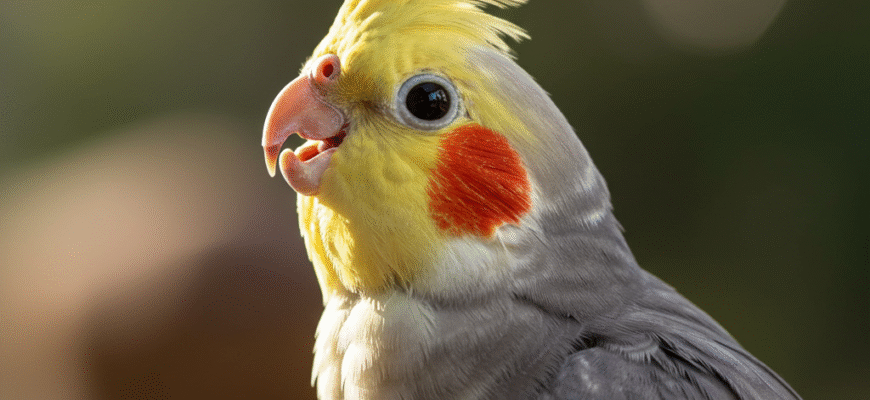Content
Why Do Cockatiels Whistle and Talk?
In the wild, cockatiels use a variety of calls to communicate with their flock. These sounds convey location, warnings, mating availability, and social bonding. In a domestic environment, your cockatiel views you and your family as its flock. Their vocalizations become a way to interact, get attention, mimic sounds they find interesting, and express their mood. Whistling often comes more naturally to them than talking, perhaps because it more closely resembles their innate calls. Talking, or mimicking human speech, is a learned behavior picked up from their environment. Male cockatiels are generally more vocal and more inclined to learn intricate whistles and speech compared to females. While females certainly chirp and make contact calls, they are typically quieter and less likely to become prolific talkers or whistlers. This isn’t a hard rule, but a common observation among cockatiel owners.Teaching Your Cockatiel to Whistle
Whistling is often the first vocal trick cockatiel owners teach their birds. Cockatiels seem to pick up tunes relatively easily, especially simple, repetitive ones. Here’s how to encourage your bird:Start Simple and Be Consistent
Choose a short, clear tune. Simple melodies like a wolf whistle, the first few notes of a familiar song (like “Happy Birthday” or basic nursery rhymes), or even just a simple ascending or descending scale work well. Whistle the chosen tune clearly and consistently whenever you interact with your bird, especially during positive moments like feeding time or gentle head scratches.Repetition is Your Best Friend
Cockatiels learn through repetition. Whistle the same tune frequently throughout the day, but keep sessions short – maybe 5-10 minutes each time. Don’t overwhelm your bird. Say the words associated with the tune if applicable, like “pretty bird,” while you whistle. This helps them associate the sound with interaction.Use Positive Reinforcement
When your cockatiel attempts to mimic the whistle, even if it’s just a squawk or a partial note, reward them immediately! Offer enthusiastic verbal praise (“Good bird!”), a favorite treat (like a small piece of millet spray or a sunflower seed), or a gentle head scratch. This positive association encourages them to keep trying.Recordings Can Help (Sometimes)
Some owners find success playing recordings of the desired whistle. However, direct interaction is usually more effective as it builds your bond. If you use recordings, ensure they are clear and not played constantly, which might cause the bird to tune them out or become stressed.Encouraging Your Cockatiel to Talk
While perhaps not as renowned for talking as larger parrots, many cockatiels can learn to mimic human speech. Patience and the right approach are crucial.Manage Expectations
Remember, not all cockatiels will talk, and those that do might only learn a few words or phrases. Their voices are often high-pitched and may not always be perfectly clear. Celebrate any effort they make!Choose Simple Words
Start with easy, one or two-syllable words. Good starting points include:- Their name
- “Hello” or “Hi”
- “Bye-bye”
- “Good bird”
- “Pretty bird”
- “Step up” (associated with the action)
Speak Clearly and Enthusiastically
When teaching a word, say it clearly and with positive emotion. Cockatiels often respond better to higher-pitched voices, but clarity is most important. Repeat the word or phrase often during your daily interactions.Associate Words with Actions or Objects
Context helps learning. Say “Hello” when you approach their cage in the morning and “Bye-bye” when you leave the room. Say “Want a treat?” while holding a treat. Use names when addressing specific people or pets. This association gives the sounds meaning for your bird.Focus on Training Times
Dedicate specific, short periods (5-10 minutes, 2-3 times a day) purely for talking practice. Choose times when your bird is alert and receptive, perhaps after a nap or during a quiet part of the day. Reduce distractions during these sessions.Verified Training Insights: Consistency and patience are paramount when teaching cockatiels. Short, frequent training sessions are more effective than long, infrequent ones. Always use positive reinforcement like praise or small treats to encourage your bird’s efforts and build a trusting relationship.
General Tips for Vocal Training Success
Whether teaching whistling or talking, certain principles apply:- Build Trust: A comfortable, trusting bird is more likely to learn. Spend quality time with your cockatiel, handle them gently, and ensure their basic needs (food, water, clean cage, enrichment) are met.
- Start Young: While older cockatiels can learn, younger birds often pick up sounds more readily.
- One Thing at a Time: Focus on teaching one specific whistle or word until your bird shows progress before introducing another.
- Location Matters: Place the cage in an area where the bird can hear daily conversation but isn’t overwhelmed by constant noise or commotion.
- Listen to Your Bird: Pay attention to the sounds your cockatiel already makes. Sometimes they mimic household sounds (phones, doorbells, microwaves) on their own! This shows they have mimicking potential.
- Be Patient: Learning takes time. Some birds pick things up in weeks, others might take months or never learn specific sounds. Enjoy your bird’s unique personality regardless of their vocal prowess.
Understanding Other Cockatiel Sounds
Beyond learned whistles and words, cockatiels have a repertoire of natural sounds:- Contact Call: A loud, sharp “wheep!” sound, often used when they can’t see you and want to know where you are. Answering back can reassure them.
- Happy Chirping/Chattering: Soft, varied chirps and warbles often indicate contentment and relaxation.
- Hissing: A clear sign of fear, anger, or feeling threatened. Give the bird space if they hiss.
- Screaming: Can indicate fear, boredom, loneliness, or be an alarm call. Investigate the cause – they might need attention, be frightened by something, or simply lack stimulation.









